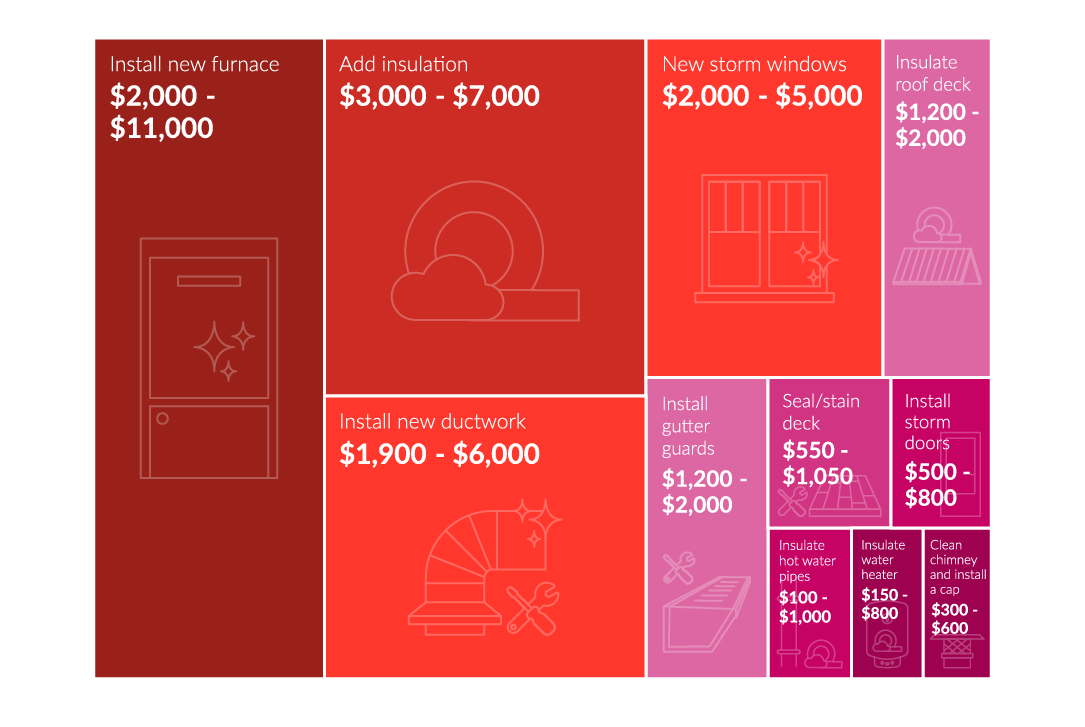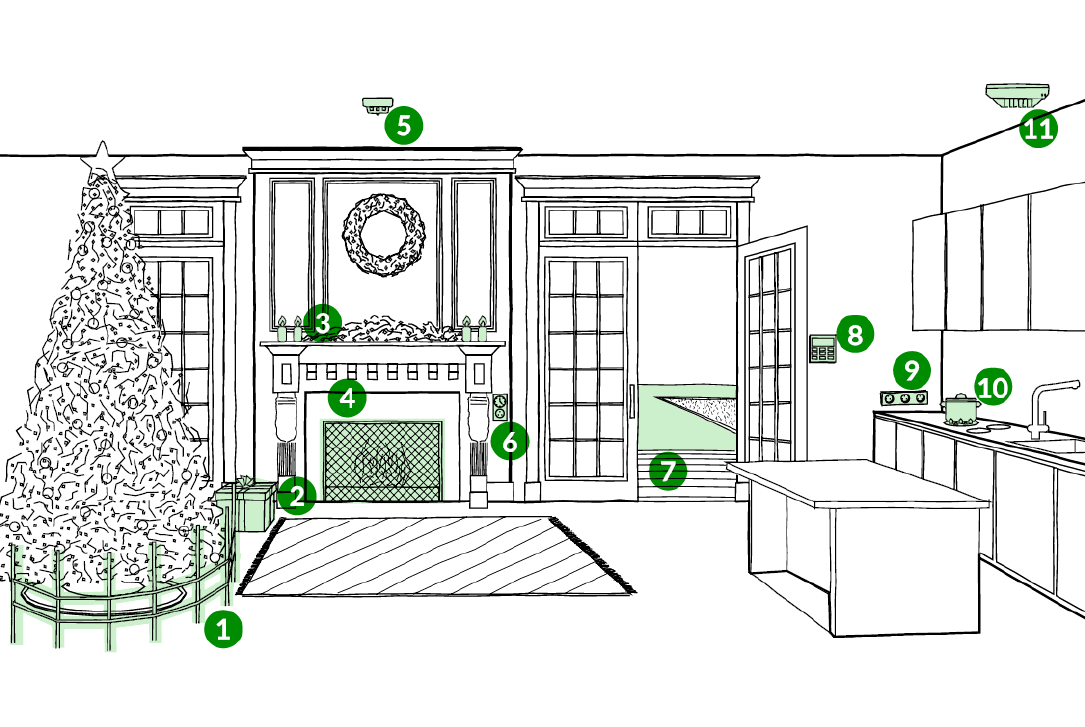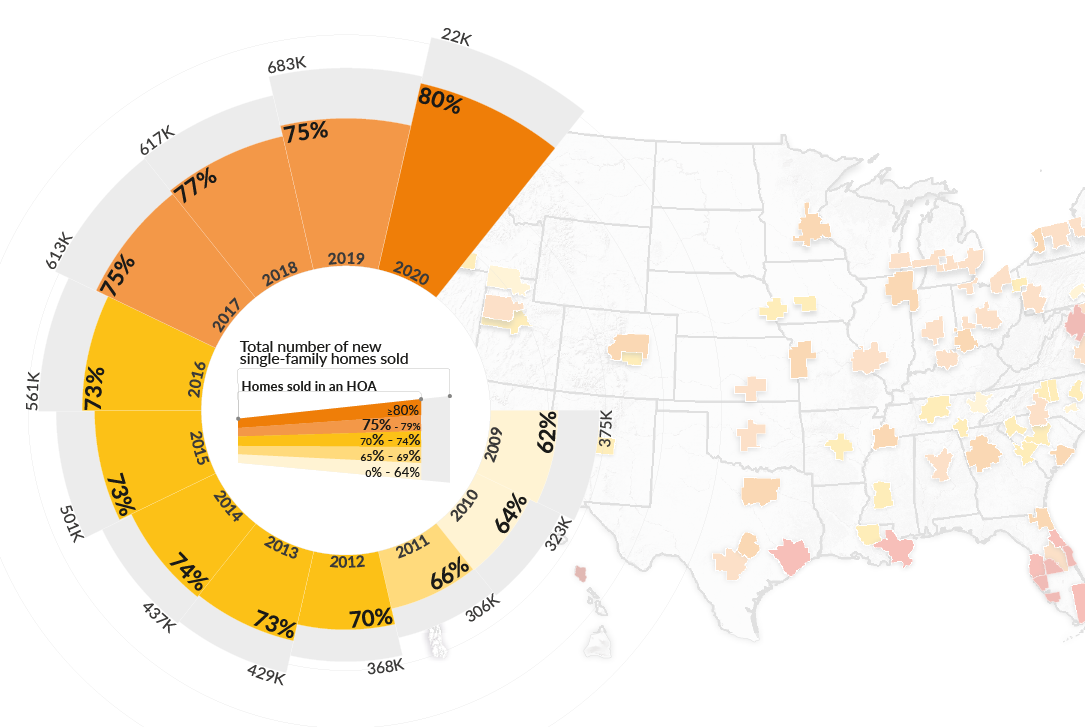As awareness is increasing about energy consumption, globally, individuals are realizing that simply turning off your lights when they're not in use, is not enough to make a noticeable change. Bigger, more significant steps have to be taken to ensure long-lasting and quantifiable benefits, both from an ecological and a personal perspective.
By building energy-efficient, certified housing, homeowners are not only ensuring savings in energy expenditure over time but also adding value to their property and improving their ‘user’ experience overall. Energy Star’s study about which states are building the most Energy Star certified homes helps to shed insight into how this industry is growing in the US.

We created this graphic using the data from Energy Star’s 2018 study on the number of single-family homes being built in the US with Energy Star certification, comparing those numbers to the number of houses being built without the accreditation. The study does not consider any other energy efficiency solutions the state may have in place.
The 10 States with the Largest Market Share for Energy Star New builds
When looking at market share, we consider the percentage of Energy Star rated homes that were built as compared to the total number of homes built in that state.
Of the top ten states with the highest market share, the actual number of Energy Star rated homes ranges from 48 to 19,634, so the size of the building market indicated by these percentages may vary greatly. They also were the only ten states to have more than ten percent of their builds certified as Energy Star builds.
Arizona had the top percentage of Energy Star certified homes with 57.70% (18,095 homes) of their total builds. District of Columbia came in second with 43.30% (48 homes) and Maryland came in third with 39.20% (4,949 homes). The remaining states all dropped below 20% with Nevada at 18.40% (2,346 homes), Texas at 16.10% (19,634 homes), New Jersey at 16.00% (1,655 homes), Colorado at 12.80% (3,667 homes), New Hampshire at 11% (277 homes), North Carolina at 10.50% (5,013 homes) and Delaware at 10.40% (561 homes).
The mid-range of states ranged in market share from 8.70% to just 0.50% with numbers of Energy Star rated houses ranging from 5,349 to just 10.
The ten states with the fewest Energy Star new builds
The states that fall into the bottom ten all had less than 0.50% of new builds with Energy Star certification. Wisconsin came in tenth with 0.30% (35 homes), Arkansas, Hawaii, Louisiana, Maine, Mississippi, and West Virginia all had 0.10% with 9, 2, 21, 5, 9, and 2 houses respectively. Alaska, Montana and North Dakota came in last with no new Energy Star builds, but with new house builds at 1,233; 2,499; and 1,965 respectively.
We focused on market share here, to give a clear indication of the focus each state has put on Energy Star builds. A focus on numbers alone would have given a distorted view as some states would have an advantage due to the high number of builds taking place in the first place. If you are already working in a space where there are plans to build several thousand new homes, it is easier to build, and more likely they will be planned, with Energy Star accreditation. Whereas in states where there is a general stagnation in the building market, by default, they will have fewer Energy Star accredited homes, as their housing stock is older and would require existing homes to be retrofitted to be Energy Star certified, to even compete with new build numbers of other states.
What are the benefits of Energy Efficiency in your home?
Of the 843,581 new home builds in the United States in 2018, 77,666 of them had Energy Star certification, meaning 9.2% of new homes in America were energy certified. This lead to a total of $21,282,262 in utility bill savings and 113,703 metric tons in CO2 emissions.
This may sound impressive, but these numbers are actually down, from 2015 which, of a total of 688,429 builds, saw 67,038 or 9.74% of those homes Energy Certified. Though there are several factors that may have lead to this slight downturn, homeowner buy-in is vital for energy-efficient homes to become the standard choice.
Why build an energy-efficient home?
One of the best features of an energy-efficient home is that unlike older traditional builds, rather than being a cash sink, it will actually lead to savings over time. As a homeowner, gaining a clear understanding of the potential benefits should easily justify the initial investment.
Lower need for heating and cooling
The core of the building concept is to build a home that requires less energy to be heated and cooled. This involves using building materials that create a sound seal from environmental conditions, including insulation, double glazing, sealed roof cavities and more. With a more constant internal temperature, homes require less energy to heat and cool.
Lower energy expenses
Coupled with the more constant interior climate, systems used to heat and cool air and water are more efficient, leading to even greater potential savings from living in an Energy Star rated home. Specifically, Energy Star buildings use 20% to 35% less energy than traditional buildings, leading to savings on energy bills of between $200 and $400 annually, and thousands over the lifetime of homeownership. Also, due to the nature of the systems used, maintenance costs over time are often greatly decreased as well.
Better green footprint
Energy Star rated homes lead to a reduction in demand for energy which means a reduction in emissions and demand from energy producers. Currently, 16% of greenhouse emissions in the U.S. are generated by domestic homes. Energy Star rated buildings lead to a 35% reduction in greenhouse gas emissions, meaning these homes are the more environmentally responsible option.
Purchase and resale benefits
An Energy Star rated home provides confidence to home buyers, as the accreditation assures certain standards have been met during the building process, which can give peace of mind for the quality and longevity of the build. Equally, Energy Star rated homes lead to an appreciation of value, and thus more promising prospects for improved sales prices should you choose to sell.
Challenges with Energy Efficient homes
Though it may sound as though an energy-efficient home is the clear choice, there are some challenges that need to be considered.
High initial costs
Since energy-efficient housing isn’t yet the norm, costs for materials and skilled labor are higher than for traditional options. Fitting the home with Energy Star rated appliances and HVAC systems will further increase your initial outlay. Though these expenses are likely to be recovered in savings over time, you need to be sure you can afford this initial high-cash input.
Slow Building Times
Again, due to the relatively new nature of these building processes, having the appropriate materials and skilled professionals in your area may be unlikely. This often leads to delays, as resources have to be sourced from elsewhere and brought in.
Structural challenges
Unlike with traditional buildings, Energy-efficient buildings and systems often require specific features from the stand and the structure of the build. For instance, some temperature regulation systems require additional excavation, or specific positioning on the site, which may add both expense and time to your build.
Geographical and Climate challenges
While some states benefit from sunshine year-round, others in the more northern and central areas don’t. This could mean the difference between a solar energy system paying for itself, and the system costing more in electrical fees needed to boost supply on cloudy days. Similar challenges can be faced with dry and humid climates and even stands with different substrate make-ups.
Building an Energy-Efficient Home
Though there are challenges, with a considered approach and a long term view, energy-efficient homes can become the norm. As a homeowner, provided you have the time and budget, the sooner your home becomes energy efficient, the sooner you can start to enjoy the savings and improvements mentioned above.
Start by talking with your contractors to ensure they are skilled and specialize in energy-efficient building, then compare quotes. Once selected, your professional team can outline the various building methods that will help to achieve an energy-efficient home to suit your needs and budget. Most importantly, they will also help to ensure you have an Energy Star score of 75 or higher, to make your home eligible to receive the Energy Star rating.
Not only will your home become one of the pioneering energy-efficient options, pushing up totals for the country but it will also be your own personal next step into the future with energy-efficient living and savings.




